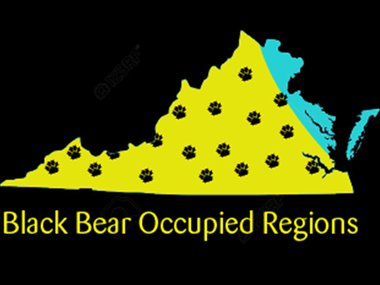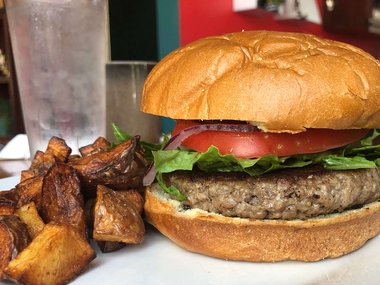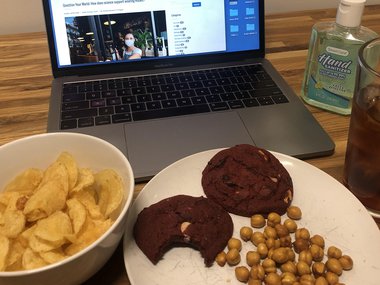As the global population grows, we’ll need more and more food to keep everyone healthy and nourished. Developing nations face this challenge more than other countries, but scientists are working on many interesting ways to provide humanity with proper nutrition, including using a very special kind of cockroach. Let’s dive into today’s amazing science story by asking the big question: Can cockroaches feed the world?
First of all, we must keep in mind that our planet is filled with all kinds of weird animals. We’ve got a mammal that lays eggs. Weird. We’ve got a bird that swims better than it can fly. Strange. We also have a specific species of cockroach, The Pacific beetle cockroach, that gives live birth and then produces milk. How bizarre! That cockroach is exactly what an international group of scientists have been studying because the milk crystals produced by this insect could play a vital role in the future of nutrition on Earth.
This particular cockroach produces these milk crystals to feed its young. Remarkably, the “milk” here is about three times more dense than buffalo or cow’s milk. The milk here is super dense with proteins, fats, and sugars. Many scientists consider these milk crystals to be superfood, giving the living system everything it needs for upkeep and nutrition. The greater issue now is how do we get this milk in normal quantities. Keep in mind, tiny insects produce tiny byproducts. A cow can easily produce up to eight gallons of milk a day, but these little cockroaches will only create a minuscule fraction of the amount from larger animals.
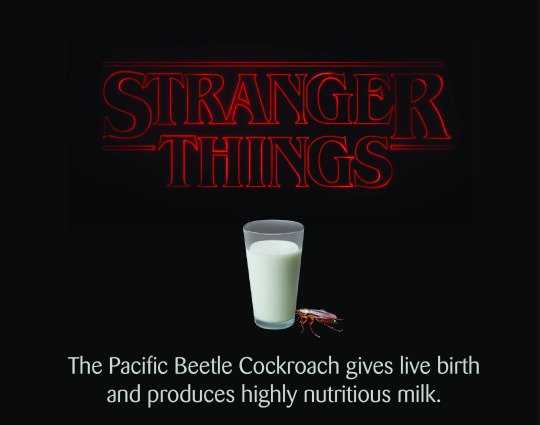
Scientists took the initiative here by sequencing the genetic information needed to produce this milk. The goal is to attempt to get a bacteria to produce these crystals in a lab. Once the production has begun, they can then find a way to put it in a form that can be consumed by the many people around the world who struggle to meet their daily nutritional needs. Our daily lives in the United States is not the ideal testing ground for these milk crystals because we do not generally have issues finding enough nutrition. In fact, we consume more calories than we need here, but there are many places around the world where a daily source of nutrition is still very difficult to come by. These scientists hope to reproduce these milk crystals in a lab in order to deliver them around the world to the many people who are in need of cheap and healthy, consistent nutrition.
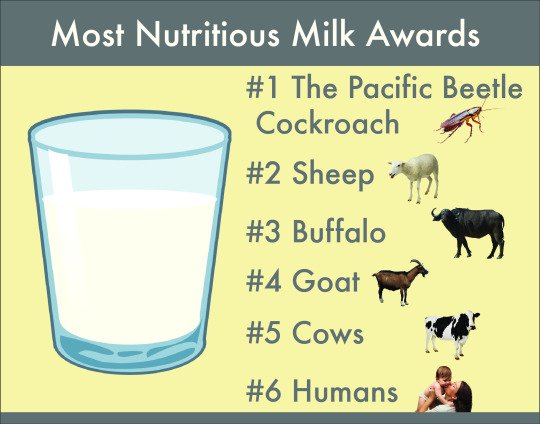
Long term applications for this idea could also include remote production of this milk crystal in places far from home, like on board the International Space Station or Mars. For now, the testing will continue in hopes to have some success with crystal production in the near future. Once the production is deemed safe, then testing can begin.
Sure, cockroaches are considered totally gross by most people Earth, but this is a great reminder of the unbelievable potential that surrounds us in the natural world. Keeping all our planet’s species safe and accounted for, while also encouraging science programs that explore out-of-the-box options like this, are vital to the future of the human species. Our day-to-day world may not involve a lot of nature, but we must keep in mind that we are absolutely a part of the natural world, and our decisions can create massive changes for other species. Our planet is a remarkable place with over 75 billion tons of living things. Everything from the cure for cancer to the cleanest way to provide energy for us could be laying right in front of us. Keeping species like this cockroach around is vital for future generations since they will face new issues that we can’t even predict right now.
Regardless, for the time being, we are limited to the amount of resources available to us on this planet. Let’s make it a point to preserve the natural world because we are absolutely a part of that story too. Everything on Earth is connected. The decisions we make will impact everything else, including cockroaches that make milk.
